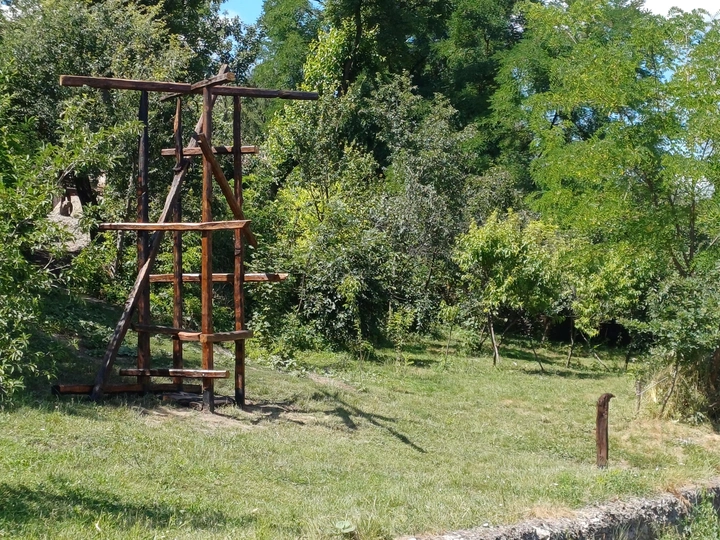A house for the last man in Hundorf

Mihaela Ducu
Radu-Mihai Măldărescu
Vlad Mihai
Maria Morar
Oana Sas
Nadina Stoica
Ole Willvock
My name is Radu-Mihai Măldărescu, I’m 25 years old, a PhD candidate in architecture, and a practicing architect. My research focuses on the avant-garde architectural expressions of the 1980s and the ways architecture can manifest through drawing, installation, sculpture, theory, or built form. I also work as a university teaching assistant and as an independent architect, drawn to alternative scenarios that move away from standardized architectural education and practice, toward a more affective understanding of place and space. My current practice leans increasingly toward illustration and installation, an artistic trajectory that contrasts with my initial formal training. So far, I’ve built two pavilions along with their landscape designs, and I’m currently working on a third one in the student housing area of Bucharest.
The proposal is a speculative architectural intervention in a depopulated Saxon village in Transylvania, where time and migration have eroded both buildings and memory. It imagines a house for a fictional “last man,” a solitary figure resisting disappearance. More than a functional dwelling, it stands as an enigmatic presence charged with memory.
Built during an artist residency, the structure was assembled from reclaimed wood taken from a dismantled barn. The beams were not cut but joined through carved notches, preserving the original scratches, hinges, chains, nails and fragments that speak of past lives. These elements were kept visible, allowing the house to carry its own archaeology.
The most impactful moment came with its reception. Assembled overnight after weeks of silent preparation, the structure stirred confusion, debate, and interest. A familiar corner of the village now held an unfamiliar silhouette. In it, locals found fragments of their world, niches containing a fork, a set of animal teeth, but nothing immediately legible. Children approached it first, climbing, playing, assigning imaginary roles. Adults followed, some curious, others cautious.
The project’s strength lies in its ambiguity. It offered no answers, only presence. Each villager projected something different onto it. It became a shelter, a playground or a provocation. Moving forward, I hope it continues to gather meaning through use, resisting fixed interpretation. It is an ongoing experiment in memory, proximity, and spatial openness.